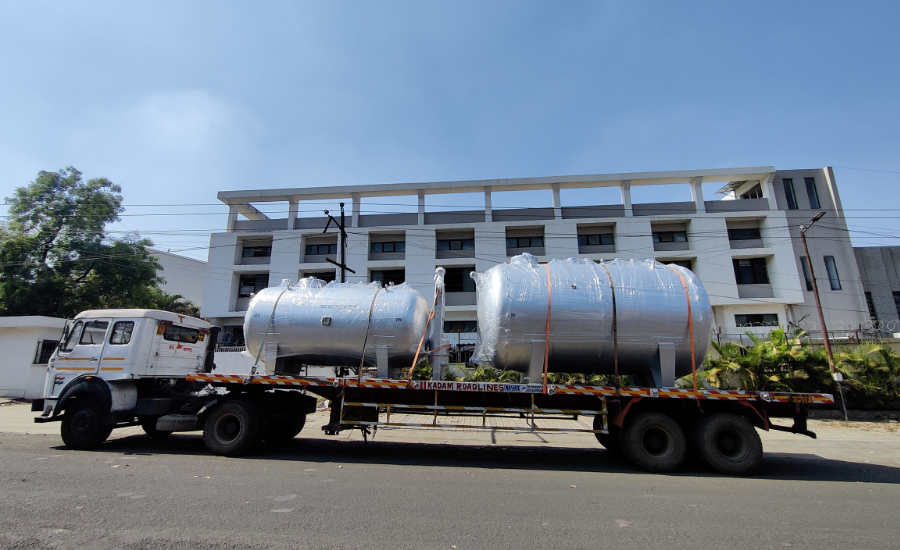
R&D Therm is a leading manufacturer of high-quality coded and non-coded pressure vessels, proudly carrying the ASME U stamp. Our pressure vessels are meticulously designed and crafted to meet the unique needs of our clients, ensuring exceptional safety and reliability. These robust containers are engineered to store and transport liquids, vapors, and gases under pressures significantly different from ambient conditions, ensuring optimal performance for diverse industrial applications.
R&D Therm is a trusted global supplier of pressure vessels. Whether you need a standard pressure vessel or a custom-designed solution for your industrial process,
R&D Therm has the expertise and experience to meet your requirements. Contact us today to learn more about our pressure vessels and how we can support your next project.
Process Vessels : Used in industries for mixing, separating, or processing fluids.
It is a container designed to contain liquefied gas at an extremely low temperature.
Double-Walled Construction : Cryogenic vessels typically feature an inner pressure vessel and an outer jacket. The space between these layers is evacuated to create a vacuum, significantly reducing heat transfer and maintaining the low temperatures required for cryogenic liquids.
Insulation Techniques : Advanced insulation methods, such as multi-layer insulation (MLI) and vacuum insulation, are employed to minimize heat ingress. MLI consists of multiple reflective layers separated by spacers, effectively reducing radiative heat transfer.
Medical Technolog : Cryogenic vessels store medical gases such as liquid oxygen and nitrogen, essential for respiratory therapies, surgical procedures, and cryopreservation in healthcare facilities.
Electronics Industry: Providing reliable cooling solutions for superconducting materials and sensitive electronic components, cryogenic vessels ensure optimal performance in advanced electronics manufacturing.
Food Industry: Utilized in rapid freezing processes, cryogenic liquids help preserve the texture, flavor, and nutritional value of food products, enhancing shelf life and quality.
Energy Generation: Critical for the storage and transportation of liquefied natural gas (LNG), cryogenic vessels support efficient energy production, distribution, and clean fuel applications.
Pharmaceutical Industry: Used for storing and transporting temperature-sensitive vaccines, biological samples, and reagents, ensuring product stability and efficacy during cold chain management.
Aerospace & Defense: Critical for storing liquid propellants and gases used in rocket propulsion systems and other aerospace applications requiring ultra-low temperature storage.
Metal Processing & Cryogenic Treatment: Employed in cryogenic hardening processes to improve the durability and wear resistance of metals and alloys.
Laboratory & Research: Essential for scientific research involving cryopreservation of cells, tissues, and other biological specimens at ultra-low temperatures.
Industrial Gas Storage: Storing large volumes of industrial gases like liquid nitrogen, argon, and oxygen for welding, cutting, and other manufacturing processes.
Environmental Applications: Used in carbon capture and storage (CCS) technologies, where gases are liquefied and stored under cryogenic conditions to reduce greenhouse emissions.
Automotive Industry: Supporting the development and testing of cryogenic fuel systems and materials for advanced automotive technologies.
Due to the extremely low temperatures and high pressures involved, cryogenic vessels must be designed and maintained with stringent safety standards to prevent material embrittlement and ensure structural integrity.
Stainless Steel / Carbon Steel / High Alloy Steels like Titanium, Hastelloy, Sanicro 28.
All R&D Therm distillation columns are manufactured in strict compliance with ASME Section VIII, guaranteeing the highest standards of quality and safety. Our certified welders employ cutting-edge techniques to deliver products that are built to last.
Please feel free to contact us.
C14/2, NICE Industrial Area, MIDC Satpur, Nashik, 422007, Maharashtra, India
C-50, MIDC Area, Malegaon, Sinnar, Nashik 422103.
Contact Now